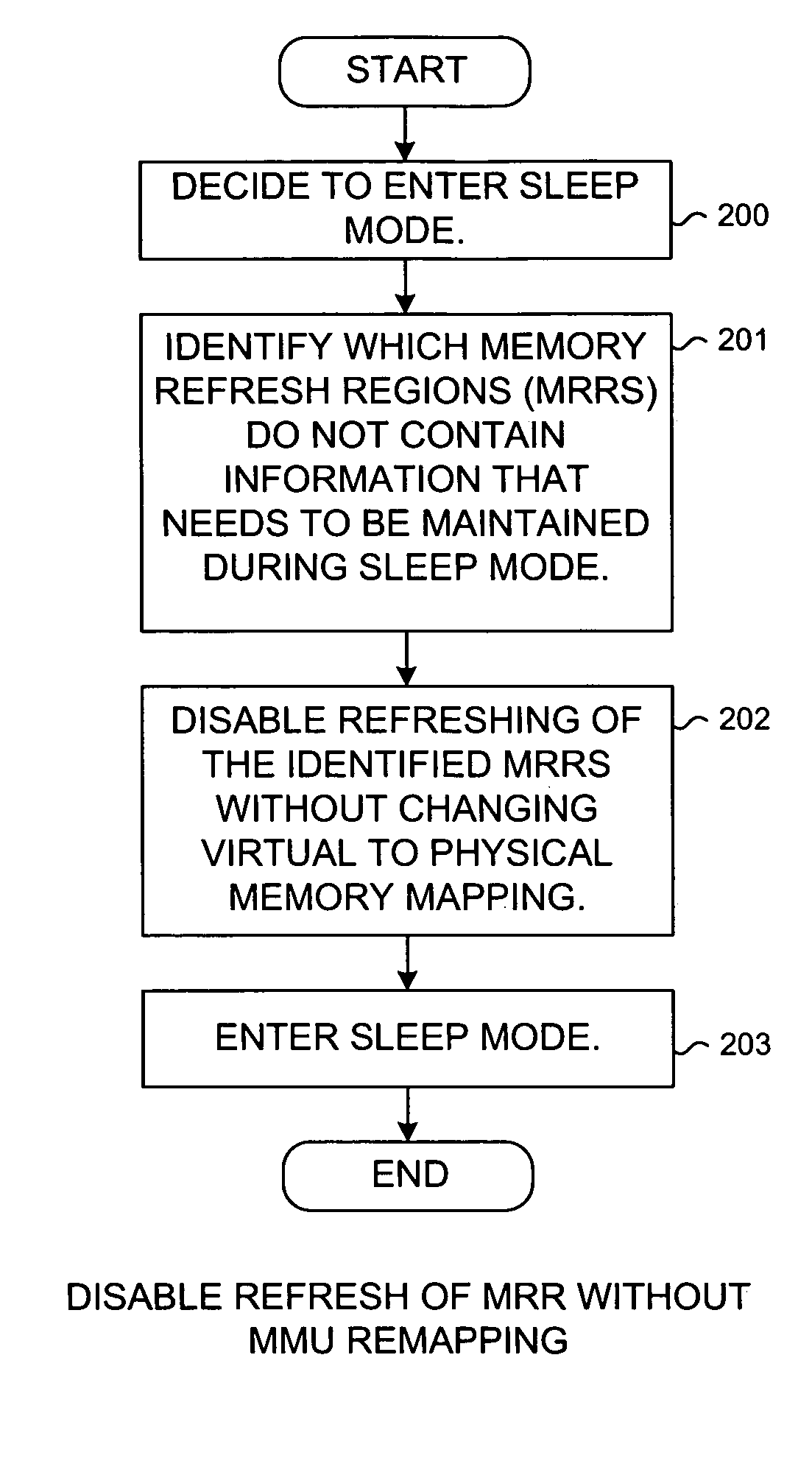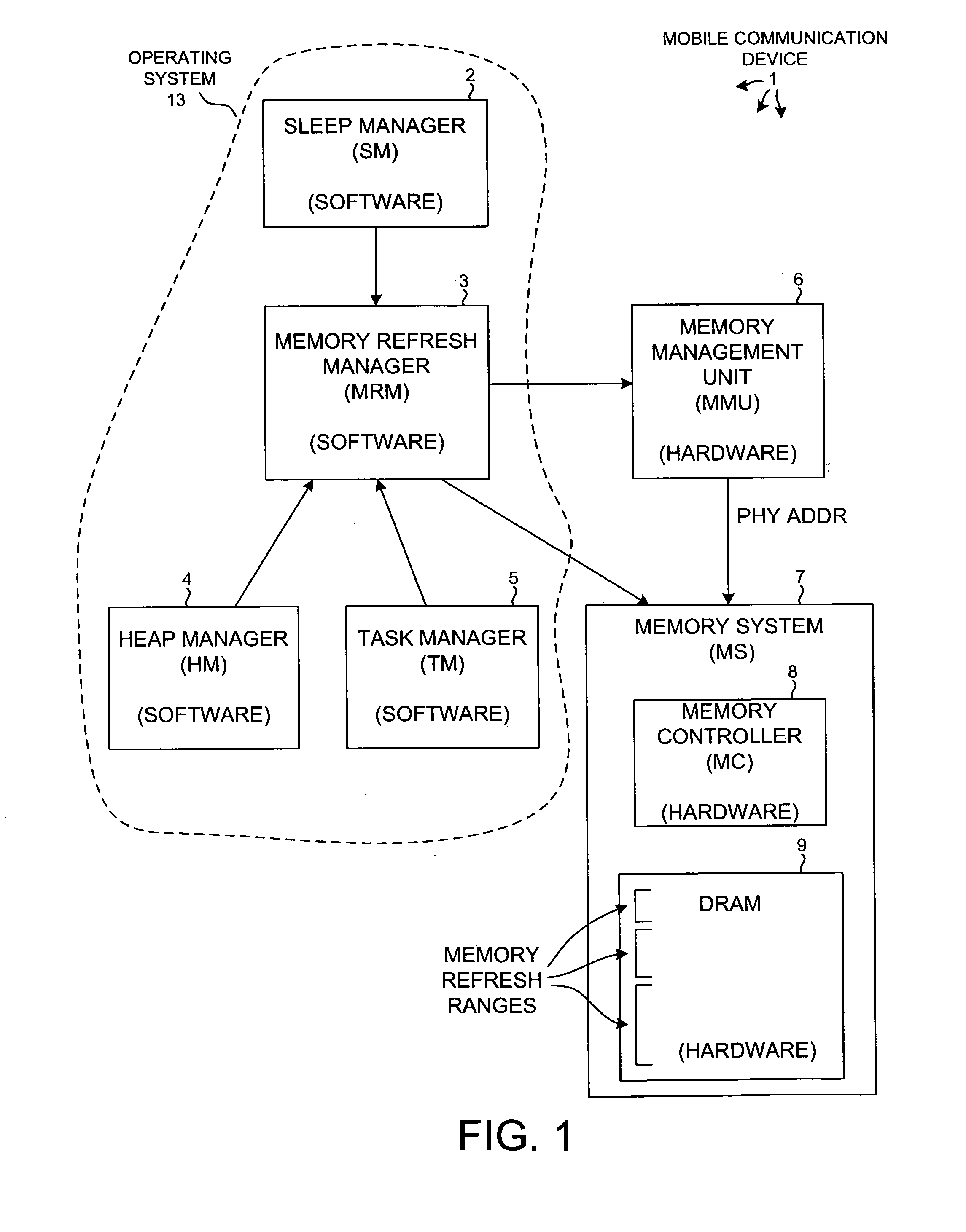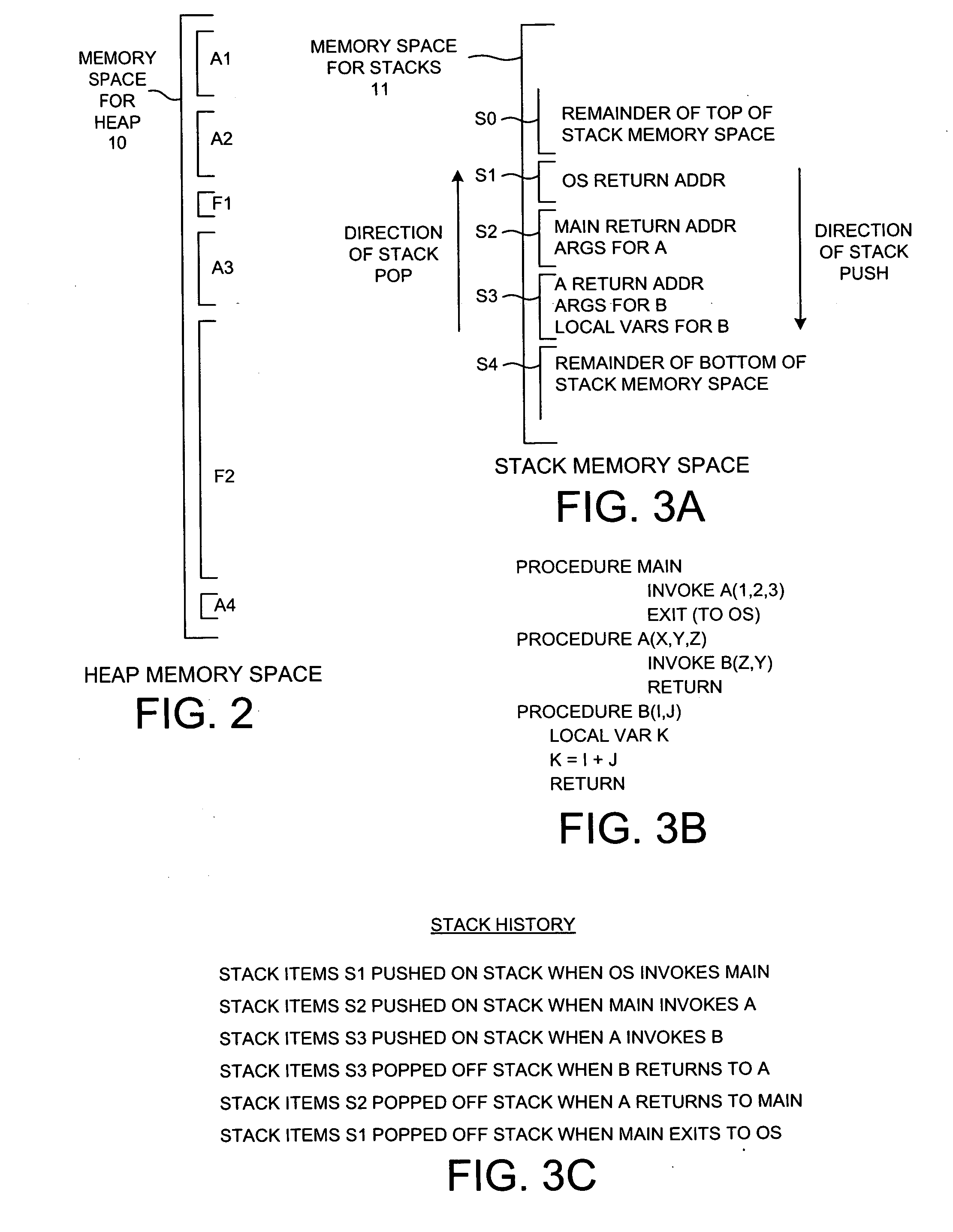Reducing power consumption by disabling refresh of unused portions of DRAM during periods of device inactivity
a technology of dynamic random access memory and power consumption, which is applied in the direction of memory address formation, micro-instruction address formation, allocation/relocation, etc., can solve the problem of power consumption of refreshing, and achieve the effect of power consumption of a mobile communication devi
- Summary
- Abstract
- Description
- Claims
- Application Information
AI Technical Summary
Benefits of technology
Problems solved by technology
Method used
Image
Examples
Embodiment Construction
[0024]FIG. 1 is a block diagram that illustrates functional components of a mobile communication device 1 in accordance with one novel embodiment. Mobile communication device 1 includes software and hardware. The software includes an operating system 13 that in turn includes a sleep manager (SM) 2, a memory refresh manager (MRM) 3, a heap manager (HM) 4 and a task manager (TM) 5. The hardware includes a central processing unit (CPU), a memory management unit (MMU) 6 and a memory system 7. Memory system 7 includes a memory controller (MC) 8 and an amount of dynamic random access memory (DRAM) 9. Whereas the CPU, MMU and MC are integrated onto a single integrated circuit, the DRAM is realized as a discrete DRAM integrated circuit in order to take advantage of high volume production of such DRAM integrated circuits.
[0025]FIG. 2 is a diagram that illustrates a heap 10 of memory space that is managed by heap manager 4. The vertical dimension in the diagram represents the overall memory ...
PUM
 Login to View More
Login to View More Abstract
Description
Claims
Application Information
 Login to View More
Login to View More - R&D
- Intellectual Property
- Life Sciences
- Materials
- Tech Scout
- Unparalleled Data Quality
- Higher Quality Content
- 60% Fewer Hallucinations
Browse by: Latest US Patents, China's latest patents, Technical Efficacy Thesaurus, Application Domain, Technology Topic, Popular Technical Reports.
© 2025 PatSnap. All rights reserved.Legal|Privacy policy|Modern Slavery Act Transparency Statement|Sitemap|About US| Contact US: help@patsnap.com



